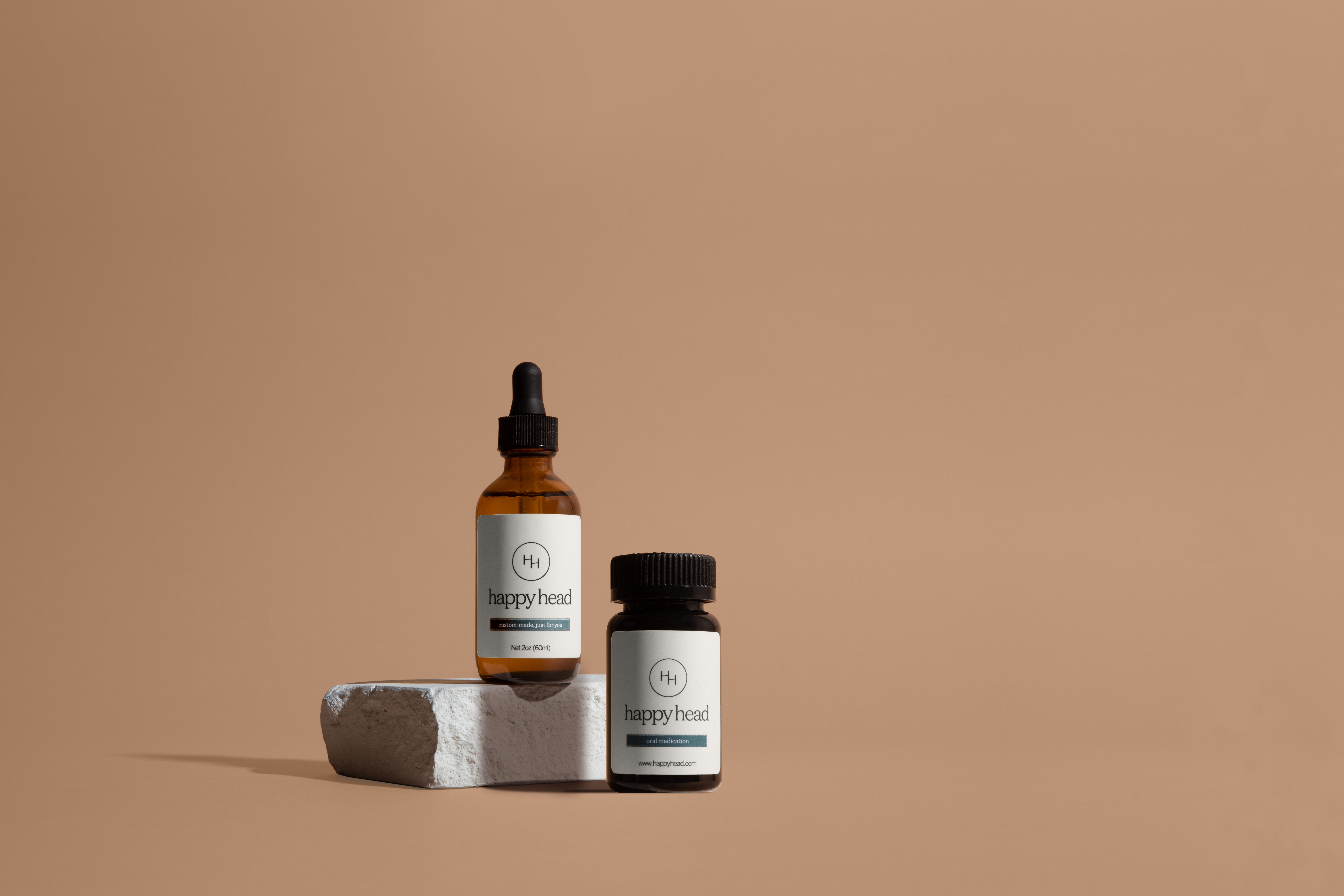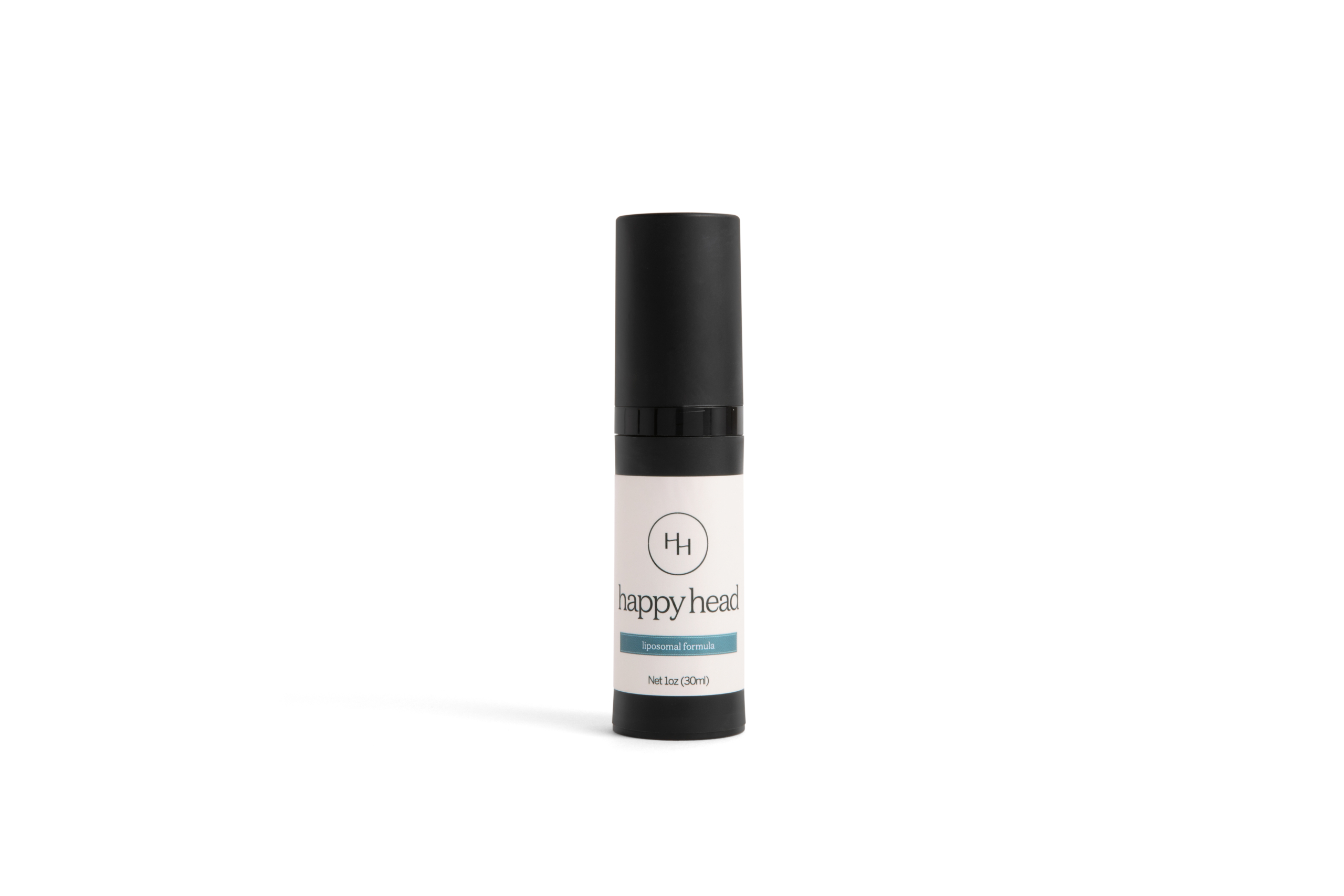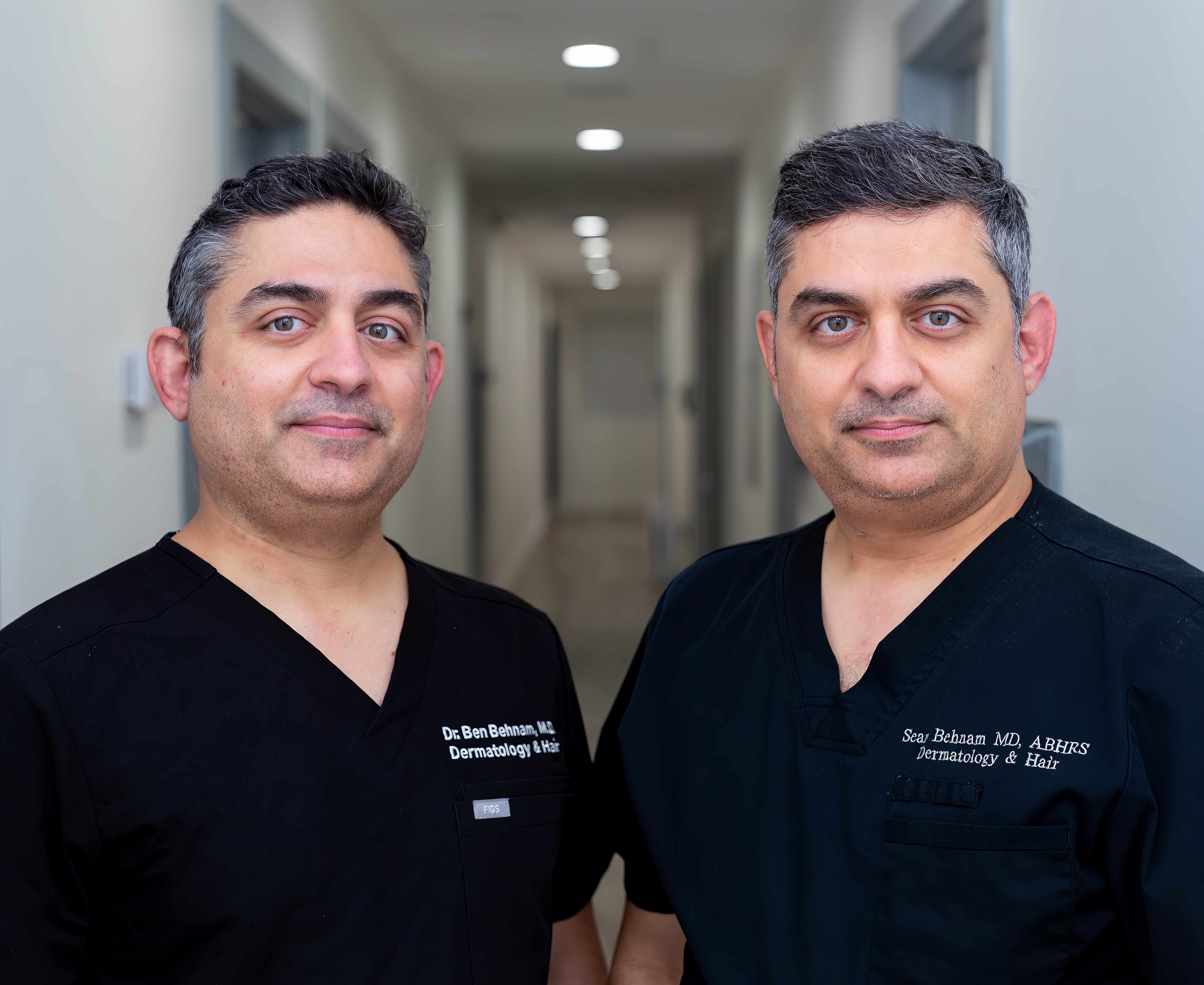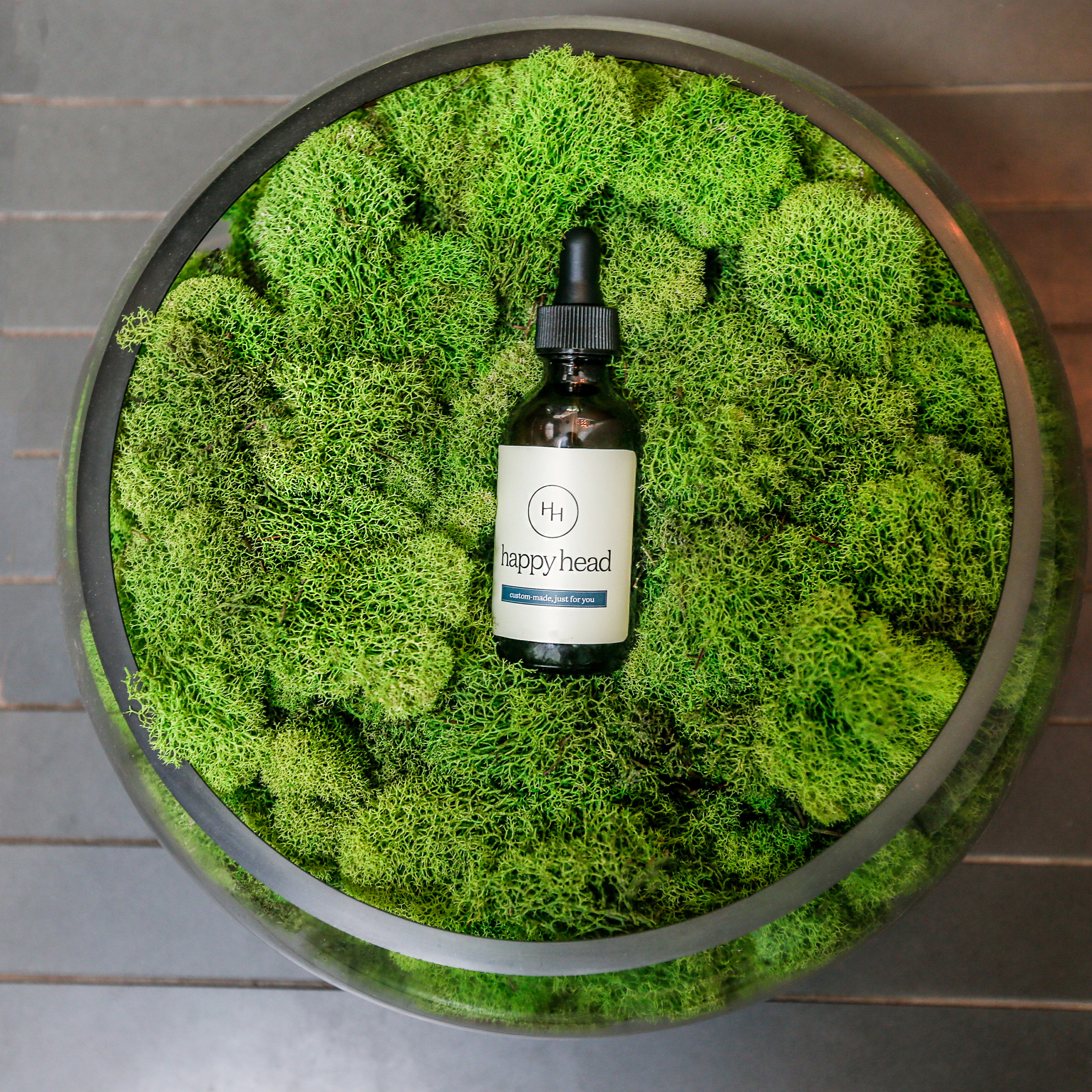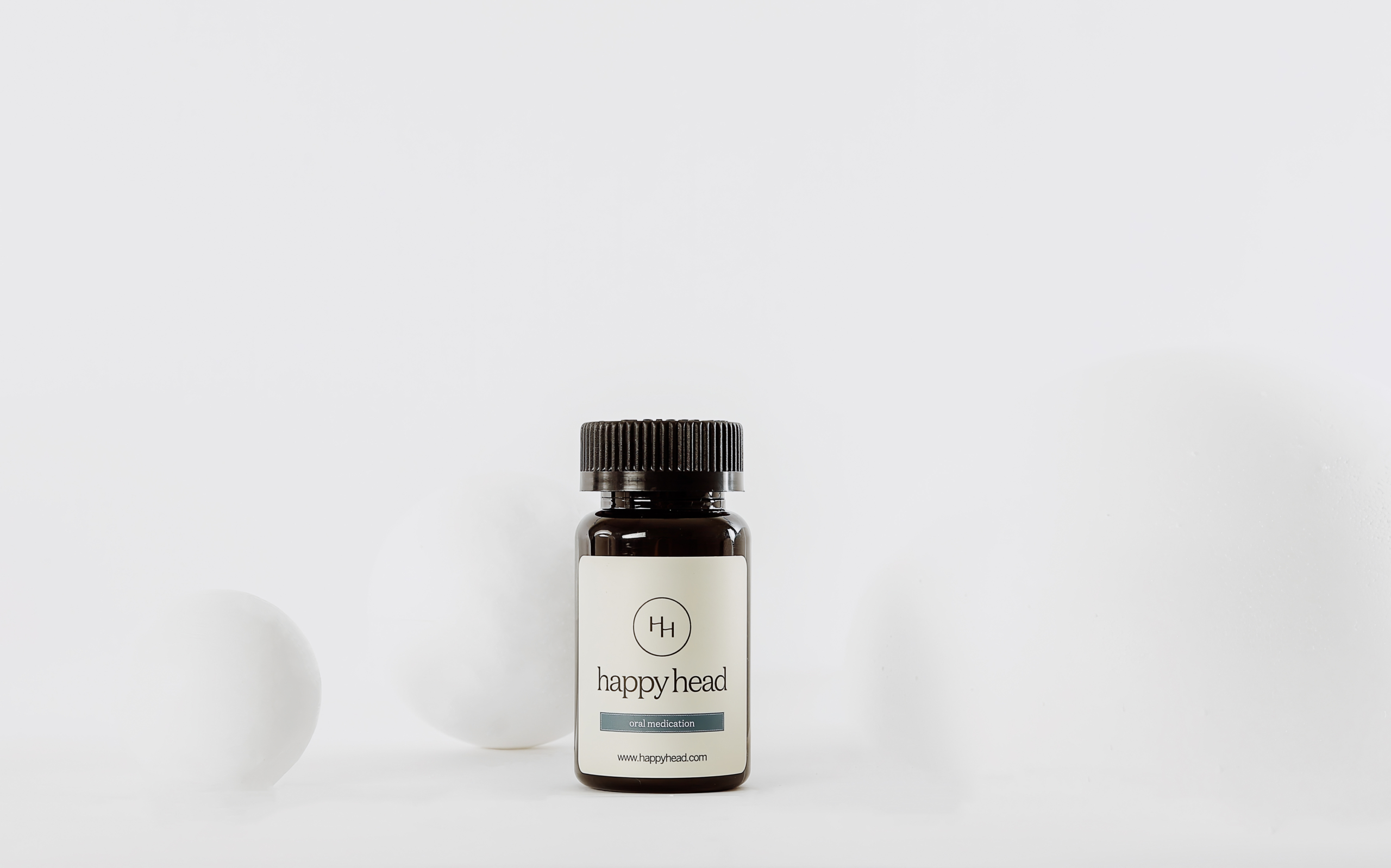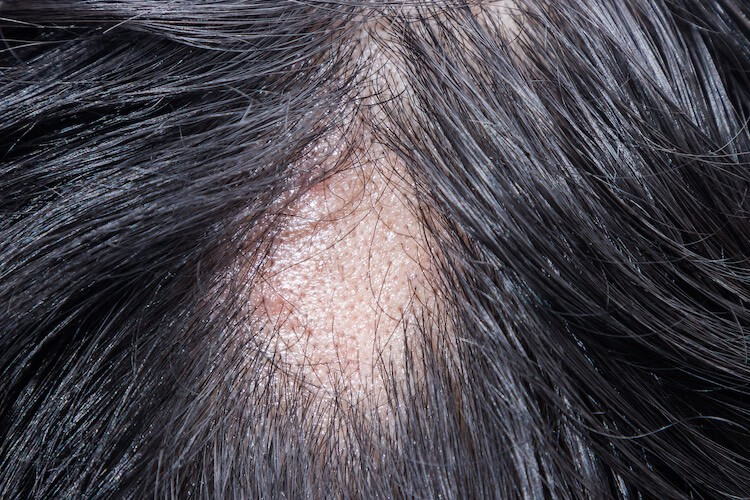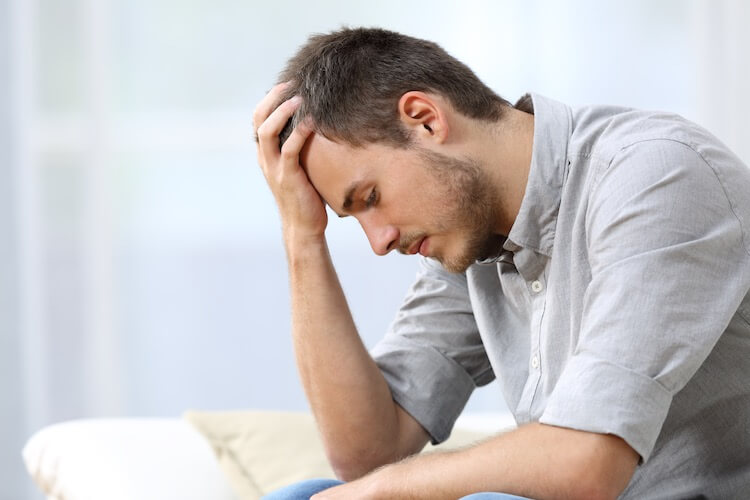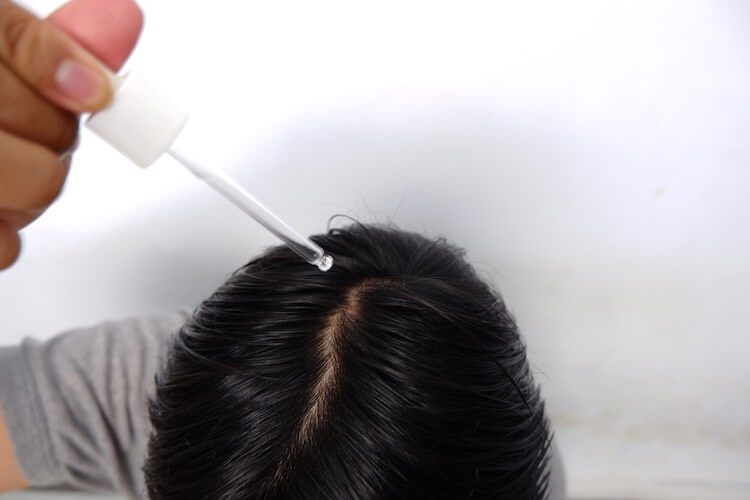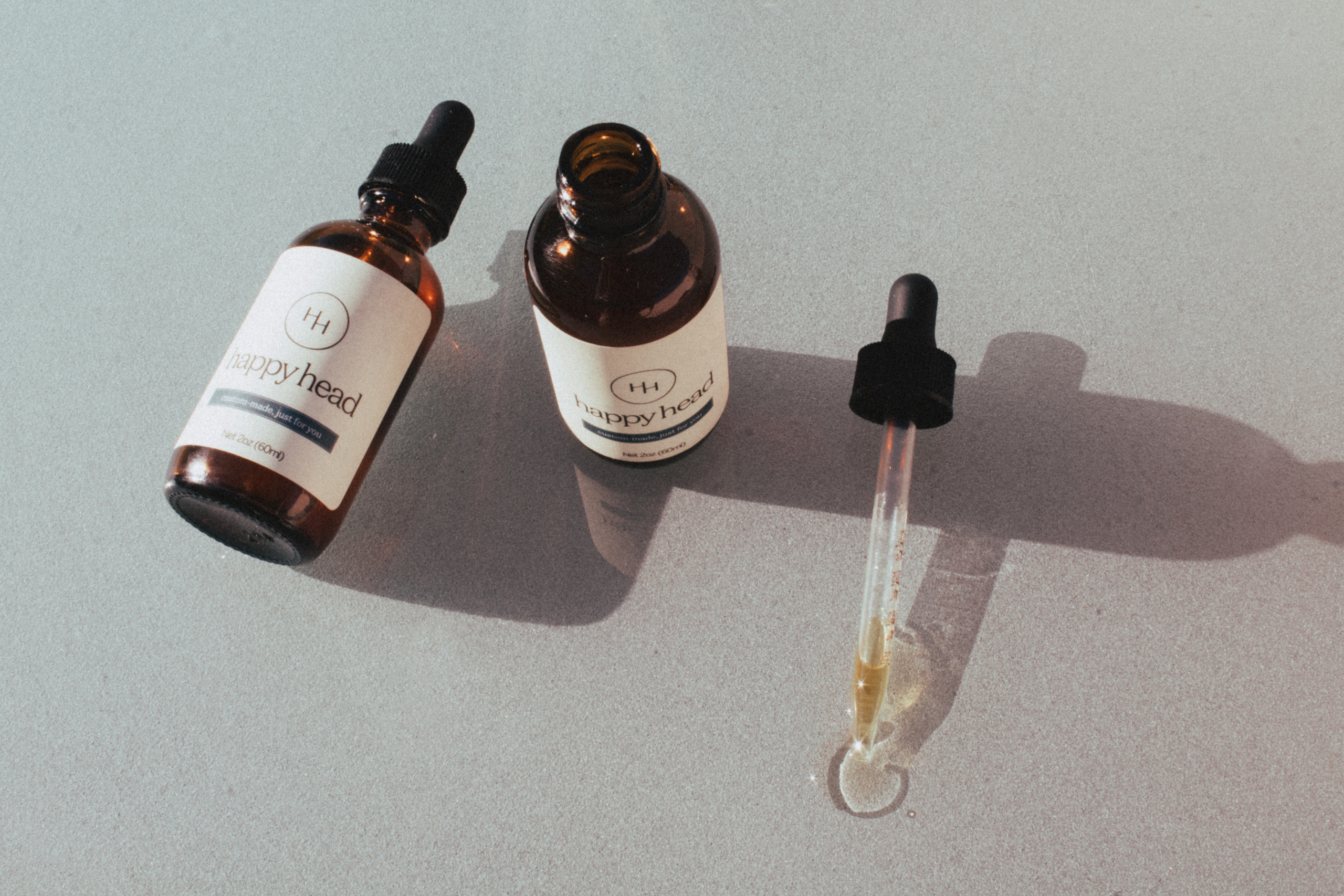Your First 6 Months With Happy Head’s Custom Topical Hair Growth Formula

When you’re ready to take control of your hair loss concerns, we’re here to help you get started. Our dedicated team of hair growth experts and board-certified dermatologists can give you all the tools you need to evaluate your hair loss condition and what the best treatment options, ingredients, and products are best for you. While there are lots of hair growth options on the market that are one-size-fits-all, we understand the importance of ingredients and how each person reacts differently to each one. Which why our hair growth solutions are custom-made just for you. That’s right, they never sit on a shelf but are made to order so you always get the freshest formulas created by a dermatologist that’s assigned to you.
Understanding the Science Behind Happy Head Hair Growth Formulas
First, we’ll explain how we evaluate your hair loss conditions and whether or not they’ll work for you. We took hair growth solutions from the doctor’s office to an online space where you can see a dermatologist without ever leaving home. Once you take our online quiz and send in a few photos of your hairline, we’ll pair you with a Happy Head dermatologist. Then your dermatologist will recommend a personalized treatment plan that is just for you.
Need a combination of oral medications and topical solutions (founder Dr. Ben Behnam’s top pick) or a full regimen from shower prep and supplements to prescription medications? We’re here to help, not just when you order but throughout your hair growth journey. As the leading provider of dermatologist-prescribed online hair growth medicines and treatments, our team of hair growth experts and board-certified dermatologists choose only the most effective and clinically proven ingredients to formulate our products.
Our Customizable Active Hair Growth Ingredients
Your hair growth results come down to support, consistency, and ingredients. So when you decide to start, feel confident in the strongest ingredients available that only dermatologists can prescribe and formulate for your needs. Here are the effective and clinically proven active ingredients we include in your customized topical hair growth solutions and oral medications:
- Finasteride: Stops hair loss and regrows hair by targeting the enzyme that converts Testosterone to DHT. Clinically proven to grow hair. For men (age 18+) and women (age 50+). Not recommended if you or your partner are breastfeeding, pregnant, or planning to become pregnant.1
- Dutasteride: Stops hair loss and regrows hair by blocking the two enzymes that convert Testosterone to DHT. A stronger version of Finasteride. For anyone who hasn’t seen results from Finasteride, men (age 18+) and women (age 50+).2
- Spironolactone: Stops hair loss and regrows hair by blocking DHT from attaching to its receptors. For women under 50 only. Not recommended if you’re breastfeeding, pregnant, or planning to become pregnant.3
- Minoxidil: Promotes hair growth by extending the anagen (growth) phase. Clinical studies show best results when Minoxidil is combined with Retinoic Acid. Our topical Minoxidil is the strongest available at 6% for women and 8% for men. For men and women.4
- Latanoprost: Promotes thicker, denser hair growth, especially when combined with Finasteride and Minoxidil. Men (ages 18+) and women (ages 50+).5
- Retinoic Acid: Clinically proven to promote growth in combination with Minoxidil by allowing Minoxidil to penetrate the scalp more effectively. For men and women who want to see a boost in their topical growth results.6
- Hydrocortisone: A topical corticosteroid that helps reduce scalp sensitivity and inflammation. For men and women who may experience irritation with prescription-grade ingredients at higher strengths.7
- Vitamin D3: An essential vitamin that promotes cellular turnover for healthy skin and the creation of new hair follicles.For men and women who are deficient in Vitamin D. According to a study, over 50% of the U.S. population is deficient in the vitamin.https://www.youtube.com/watch?v=re7bVZxnABM
To learn more about all optional and customizable ingredients included in our topical solutions, check out our Science Page here.
How Long Until I See Hair Growth Results With Happy Head?
When you’re consistent with topical applications and your oral medications, you can rest assured that the first few months are when you’ll start to see new growth: about 3-6 months. Some customers see results sooner than that, but it all depends on the person. At Happy Head, we guarantee that you’ll see results in 6 months or we’ll offer you a complimentary reformulation.
What to Expect In Your First 3 Months
First things first: congratulations on making the commitment to your hair. Investing in yourself pays off. We’re here to help you get started and see results, so you’ll always have access to your dermatologist to help if you have any questions. Three months is the foundation of your hair growth success, so we suggest getting into a daily routine. Your hair follicles are going to get their first kickstart into the growth process, so get into an easy routine. If you take vitamins, add your hair growth application at the same time.
When it comes to hair shedding: Only about 5% of people may experience hair shedding when using new hair growth medications like Minoxidil Dr. Benham explains hair shedding and why it happens in the video below.
If hair shedding does happen, it’s a normal part of the process that’s only temporary. Once hair shedding is complete, your hair growth cycle begins, and you’ll start to see the beginnings of new growth. Not everyone sees hair growth at this stage though, so if it takes just a little longer that is also normal and may take up to 6 months to see. We suggest you get into a routine so you never miss an application. Hair growth takes time and we encourage you to use your products daily and make it a habit.
What to Expect 6 Months & Beyond
This is the point where, if you’ve waited for results at this point and haven’t seen much of a chance, you should start to see the beginnings of new, fuller, thicker strands start to grow in. If you’re still not seeing results, reach out to your Happy Head dermatologist to ask about a complimentary reformulation to try something stronger or an entirely different combination of ingredients.
We encourage you to keep your applications consistent and don’t stop any hair growth treatments until you speak to your Happy Head board-certified dermatologist. If you stop using your hair growth treatments it’s likely you’ll lose all of your hair growth progress. At every step your hair growth journey, our hair experts and your dermatologist are here to help you. With regular check-ins and follow-ups all online, you can send your dermatologist progress photos so they get the most up to date look at your hair growth. We also provide application support and have recommendations for new products and tools ready to ship as needed.
If for any reason you experience any side effects, also ask your dermatologist so they can help determine what’s causing it and make adjustments to your custom formula. You can also take a look at our ingredients and any side effects here on our Science Page. For this reason we recommend starting hair growth treatments with our propretary topical hair growth formula to significantly reduce your chances of experiencing any side effects. Topical hair growth formulas are clinically proven to have less side effects, especially sexual side effects in men. Our latest formula, our Liposomal formula reduces changes of epxericing side effects further without any systemic absorption into the bloodstream.
What Can I Do at Home to Help Boost Hair Growth?
Great question! There are quite a few things you can do at home to help improve your hair growth results. Our dermatologists always recommend having a blood test with your doctor to help determine if you have any vitamin deficiencies or other illnesses that could be the root cause of sudden hair loss. A blood test can help to tell you whether or not your thyroid or other hormones are out of balance which can also contribute to thinning and hair loss.
A helpful tip to naturally balancing your hormones and bringing down stress which is a key factor of andorgenetic alopecia is to rethink your diet and lifestyle. While you’re looking to regrow your hair, stress can inhibit growth cycles so adding in exercise a few times a week is recommended.
In addition you can also use tools like Scalp Dermarollers and laser hair stimulation to boost your hair growth. We recommend using a dermaroller whenever you’re able on your scalp just before applying your topical hair growth treatments. Why? Similar to a microneedling procedure that helps to break down damaged collagen and promote cellular turnover, a dermaroller can help repair weakened or damaged hair follicles and allow for optimal absorption of topically-applied solutions. Ask your dermatologist about adding one to your hair growth subscription.
If you have any other questions about our ingredients, formulas, or how our subscriptions work, please head over to our FAQs page here. And if you’re ready to get started on your hair growth journey, head over to our online questionnaire and get a special first-order offer.

